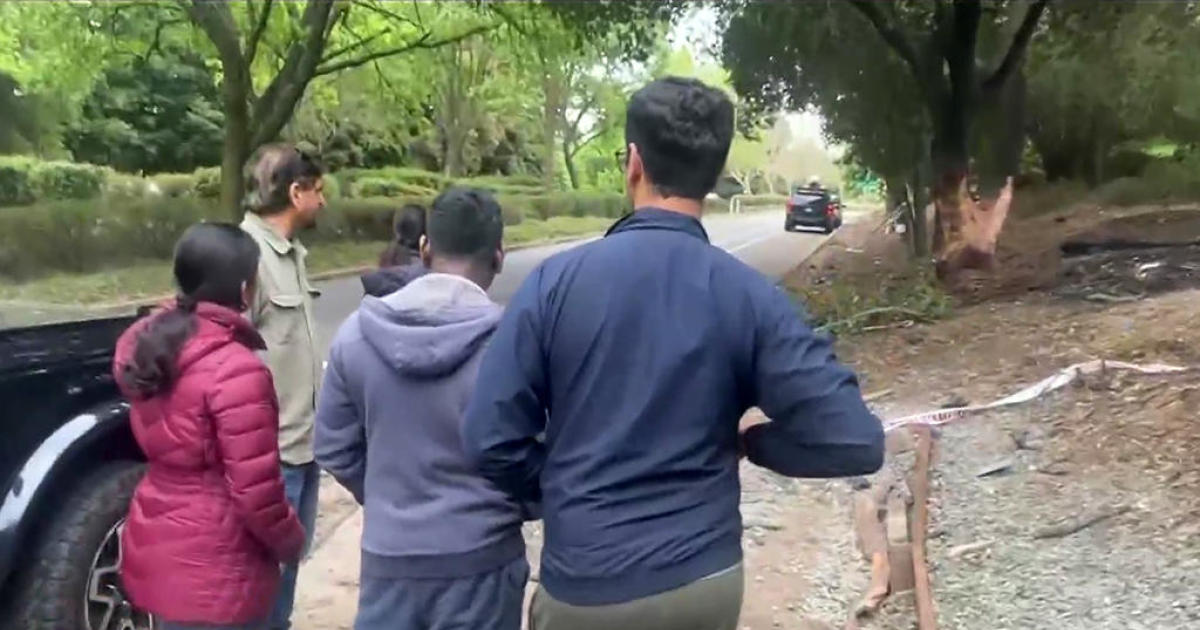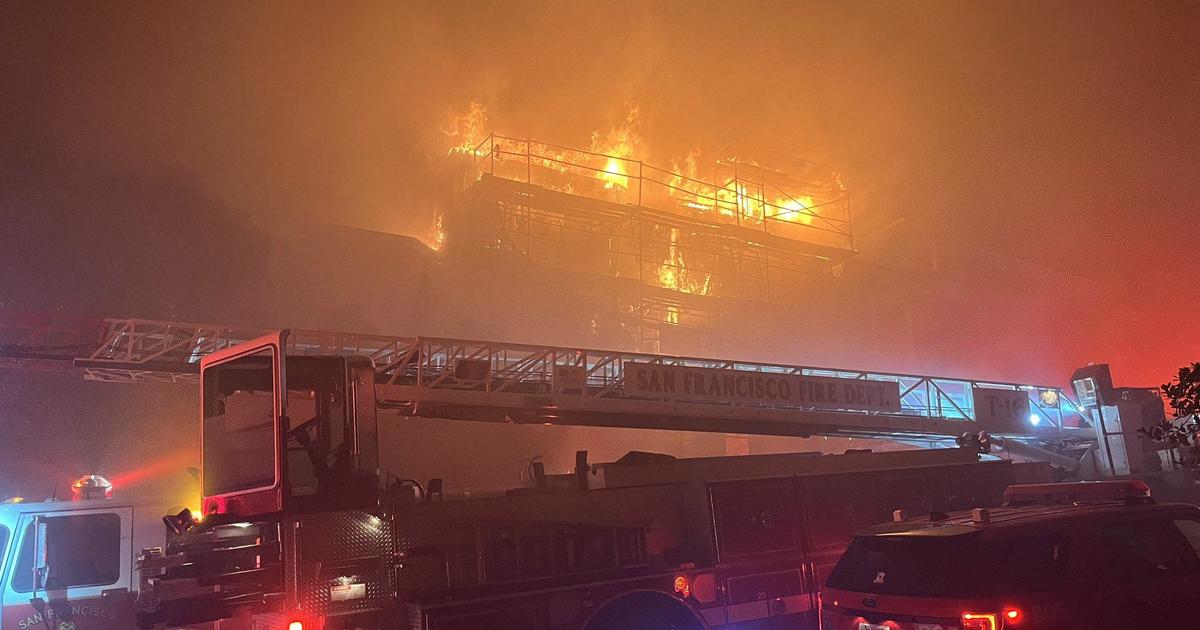Bear Fire Update: Newsom Blames 'Climate Emergency' For Historic Wildfire Outbreak; Agonizing Vigil For Families Of Yuba County Missing
YUBA COUNTY (CBS SF) -- Standing in smoke-filled, burned-out Yuba County park, Gov. Gavin Newsom blamed 'a climate emergency' for the historic outbreak of wildfires across Northern California that have claimed at least 14 lives, destroyed hundreds of homes and laid to waste more than 3 million acres of land.
Newsom was visiting the site of the North Complex West Zone -- formerly known as the Bear Fire -- that has ravaged communities near Oroville Lake.
"If you don't believe in science, I hope you believe in observed evidence," Newsom said. "You walk around this community, you walk around Lake Oroville -- you see a reality -- a reality that has set in in this state in very indelible ways. That is we are in midst of a climate crisis. We are in the midst of a climate emergency."
"We are experiencing weather conditions of the likes we've never experienced in our lifetime," he added. "We are experiencing what so many people predicted decades and decades ago. But all of that now is reality."
Newsom further emphasized his point by going through a litany of weather milestones just over the last several months.
"Mother Nature is physics, biology and chemistry," Newsom said. "She bats last and she bats 1,000. That's the reality was are facing. The smash-mouth reality. This perfect storm. The debate is over around climate change. Just come to the state of California. Observe it with your own eyes...The extreme droughts, the extreme atmospheric rivers, the extreme heat. Just think in the last few weeks alone we have experienced the hottest August in California history. We had 14,000 dry lightning strikes over a three-day period."
"We are experiencing world record breaking temperatures in the state of California -- 130 degrees. We had 121-degree temperatures in LA County."
Three of the top four wildfire outbreaks in state history -- No. 1 August Complex, No 3. SCU Lightning Complex and No. 4 LNU Lightning Complex -- were still burning as of Friday.
The North Complex West Zone has proven to be the most deadly -- claiming at least 9 lives with 19 or more still missing. The LNU Complex fire claimed five lives in Napa and Solano counties.
At a Friday evening fire update, Butte County Sheriff Kory Honea said the death toll had dropped by one. Deputies found what they thought were skeletal remains in a burned out shed, but closer inspection revealed that it was what was left of a charred anatomical skeleton used for the study of anthropology.
Honea did released the name of one of those fire victims after her remains were identified and her next of kin contacted. The body of 77-year-old Millicent Catarancuic was discovered near a vehicle in Berry Creek. The remains of two other individuals were found nearby but have yet to be identified.
Among the missing were Sandy Butler and her husband, who had called their son to say they were going to try to escape the flames by finding shelter in a pond.
They have not been heard from since that call.
"We're still hoping and praying for good news," said Jessica Fallon, who has two children with the Butler's grandson and considers them her own grandparents. "Everything is replaceable, but not my grandparents' lives. I'd rather lose everything than those two. They kind of held the family together."
Fallon said she'd been peppering hospitals with phone calls in search of her grandparents. There was no word of them late Thursday night.
Meanwhile, the wait for the family of 16-year-old Josiah Williams turned tragic on Thursday. His family said DNA had revealed the remains of one of the 10 victims found had positively identified the body as his.
Christina Som got the call she had been praying for. Her step-father, whose home had been destroyed, was found huddled with 10 of his neighbors in their cars.
"We didn't know if he was hurt or if something happened or if he needed help," she said. "(It's) a really big relief, I didn't know what to say I was pretty much speechless."
Sadly, this is not new for Butte County residents. In 2018, the Camp Fire killed 85 people as it raced through Paradise and Cancow at breakneck speed, overwhelming residents as they tried to flee.
Just like in that blaze, Bell said, forensic anthropologists from nearby CSU-Chico State have been added to search teams to help recover the remains of fire victims.
As seems to be the case during this late summer of fire in Northern California, officials have renamed the Bear Fire as part of a larger North Complex. It is now the North Complex West Zone.
At Thursday night's briefing Cal Fire officials revealed the explosive growth of the Bear Creek offshoot of the complex. Cal Fire Chief John Messina said the agency received a call on Sept. 8th that a fire had jumped the fire lines at Burks Lake.
Over the next 18 hours it traveled 30 miles, leaving in its wake a path of death and destruction. As of Friday night, the Bear Creek portion of the complex stood at 70,500 acres, was 5 percent contained and had destroyed at least 2,000 structures.
The entire North Complex fire was at 252,173 acres and was 21 percent contained.
"This is a fire that is impossible to fight directly as it moved through these communities it made a run that we have described as historic" said Cal Fire Chief Shane Laundersdale, who is the North Complex West Zone operations manager. "Many of the structures that were impacted...were destroyed in the path of the fire."
Because of the fire danger still in the area, Cal Fire has not been able to get damage assessment teams deployed.
"The terrain is difficult," Massina said. "The weather is hot and there is a massive amount of control lines to put in. We are asking for patience from those who have been evacuated."
Among the most devastated communities was the hamlet of Berry Creek, with a population of 525 people. Photos and videos of the area have shown widespread destruction -- homes turned to ash and abandoned vehicles burned down to their metal frames.
While a heavy smoke layer the fire has cooled temperatures and elevated humidity, it also has all but grounded any help firefighters were getting from air support.
Cal Fire meteorologist Dan Borsum said at Thursday night's briefing that there will not be any major improvement in the skies for several days.



